Lizard Lighthouse
Lizard,
Cornwall
|

Featured Location Guide |
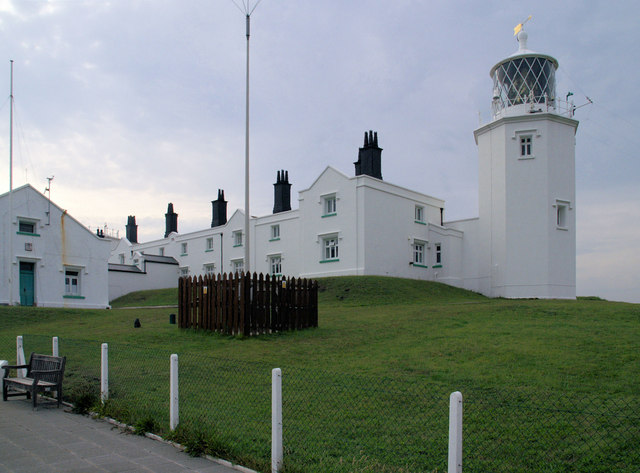
 Photo by
Pierre Terre Photo by
Pierre Terre

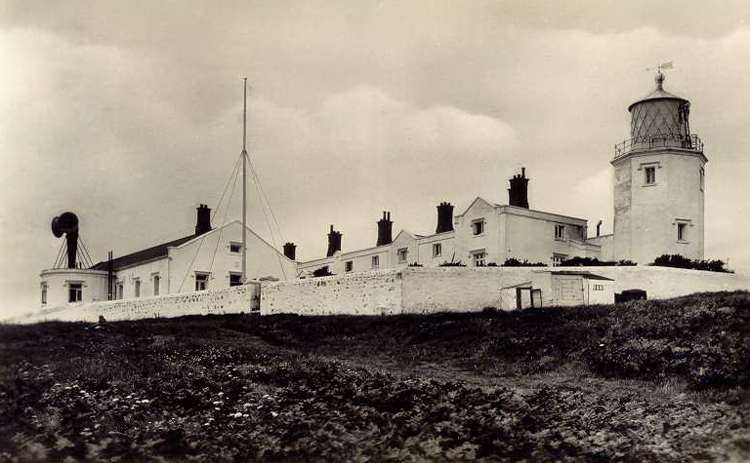
An old photo of the lighthouse - probably
1910-1920
Photo from Camera Images GBPictures archive
Lizard Point is the most southerly part of
mainland Britain, sticking out south of the rest of Cornwall and around 20
miles west and over 5 miles south of Lands End. Around the point are many rocks,
making it both a major hazard and one that would be often encountered when
arriving from the south west or when passing along the south coast going west and the first landfall, or last mainland.
The Lizard Lighthouse is very easily
identifiable with distinctive twin towers and a landfall and coastal mark giving a guide to vessels in
passage along the English Channel or arriving from the south west, and warning of the hazardous waters off Lizard
Point.
It started with two working lights, later
modified to have one, and this famous lighthouse has been a traditional landfall
for ships arriving in England for more than 250 years.
Today its open to visit, and also has an
exhibition centre, see details below.
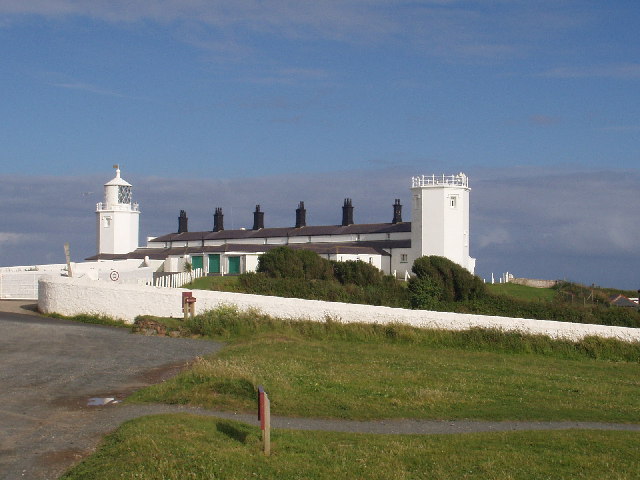
 Photo by
Gordon McKinlay Photo by
Gordon McKinlay

The History
Many stories are told of the activities in the
distant past of wreckers around the UK coasts, most of
which are probably exaggerated, but small communities occasionally unofficially and sometimes
officially benefited from the spoils of shipwrecks, and petitions for
lighthouses were often rejected on the strength of local opinion for one reason
or another, and this applied to the South West of England. While this is often
put down to the antics of wreckers we should also remember in those days
there was no possibility of anyone much coming to the local inhabitants assistance
so far down, if they were raided by military or other pirates, and the
advertising of where to land safely at night to would be enemies may have had
more to do with their objections.
The distinctive twin towers of the Lizard Lighthouse, mark the most southerly
point of mainland Britain. The coastline is particularly hazardous, and from
early times the need for a beacon was obvious.
It was Sir John Killigrew, a
philanthropic Cornishman, who we know applied for a patent. Apparently, because it was
thought that a light on Lizard Point would guide enemy vessels and pirates to a
safe landing, the patent was granted with the proviso that the light should be
extinguished at the approach of the enemy.
Sir John Killigrew agreed to erect the
lighthouse at his own expense, for a rent of "twenty nobles by the year",
. for a
term of thirty years. A
noble
 being 6 shillings and 8 old pence (33 new pence) and the first gold coin to be
minted in volume in England.
being 6 shillings and 8 old pence (33 new pence) and the first gold coin to be
minted in volume in England.
Although he was willing to build the tower, he was too
poor to bear the cost of maintenance, and intended to fund the project, like
others, by
collecting from ships that passed the point, any voluntary contributions that the
owners might offer him. In spite of the difficulty of recruiting local labour,
the tower was finished by Christmas 1619, and proved a great benefit to
mariners.
| However, the ship owners offered nothing for its upkeep, and
as others around the country found, the
mounting costs of maintenance were bankrupting him. Against the advice of
Trinity House, James I set a fee of one halfpenny a ton on all vessels
passing the light. This tax was opposed by ship owners, and as a
result the patent was withdrawn, the light extinguished and the tower demolished.
Patent applications were made and refused
over the years, until in 1748 Trinity
House supported an attempt by Thomas Fonnereau to erect a lighthouse. The
building was completed in 1751, and consisted of two towers, with a cottage
built between them, in which an overlooker lay on a sort of couch, with a window
on either side commanding a view of the lanterns. When the bellows blowers
relaxed their efforts and the fires dimmed, he would remind them of their duties
by a blast from a cow horn.
Trinity House assumed responsibility in 1771.
The signal station nearby was built by Lloyd's
of London to report ship arrivals, and this famous lighthouse has been a
traditional landfall for ships arriving in England for more than 250 years.
Structural alterations were made in 1812, which
left the station much as it is today. The Western Tower was discontinued soon
after 1903 and a single flashing light installed in the Eastern Tower.
The Lizard Lighthouse was automated in 1998.
Fog Station
 Photo by
Bob Jones
Photo by
Bob Jones

|
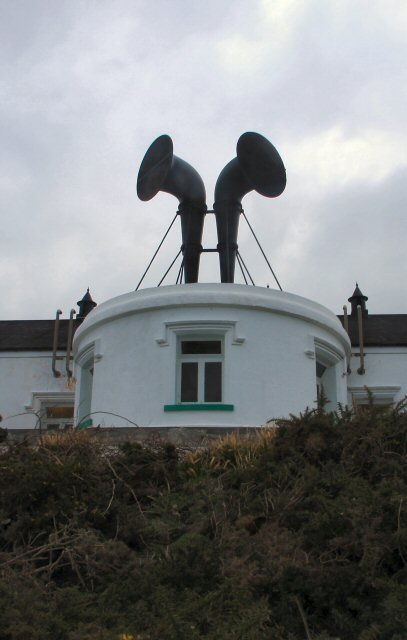 |
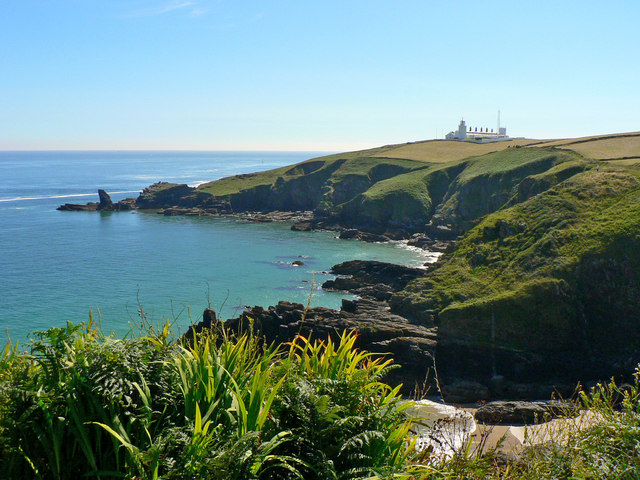
Housel Bay, The Lizard  Photo by
Mick Lobb Photo by
Mick Lobb 
This view includes several salient features of
the bay. On the cliff top, the lighthouse complex, to the left toward the end of
the point, Bumble Rock, and just discernible, the hollow of the Lion's Den,
sometimes referred to as the Devil's Frying Pan, remains of a sea cave that
collapsed in 1847. The sandy Housel Cove, that can be reached by a steep cliff
path, can be just glimpsed over the cliff edge in the foreground
| Visiting
Visitor facilities at the lighthouse were
operated by the Trevithick Trust for many years.
In 2004 the lighthouse was closed for
renovations, and during the same year the Trust went out of operation.
Trinity House then took over the visitor facilities and
reopened the lighthouse on May 1, 2005.
The
Visitor
Centre
 and tower open daily in the summer and several days per week
the rest of the year. Further details and links in the grids
below. and tower open daily in the summer and several days per week
the rest of the year. Further details and links in the grids
below.
The image to the right  Photo by
Chris Allen
Photo by
Chris Allen

Optic that floats in a bath of mercury.
Originally powered by clockwork, it is now powered by duplicated
electric motors and has a 1,000,000 candlepower bulb that is replaced
every 6000 hours. The bulb is permanently lit and automatically backed
up. |
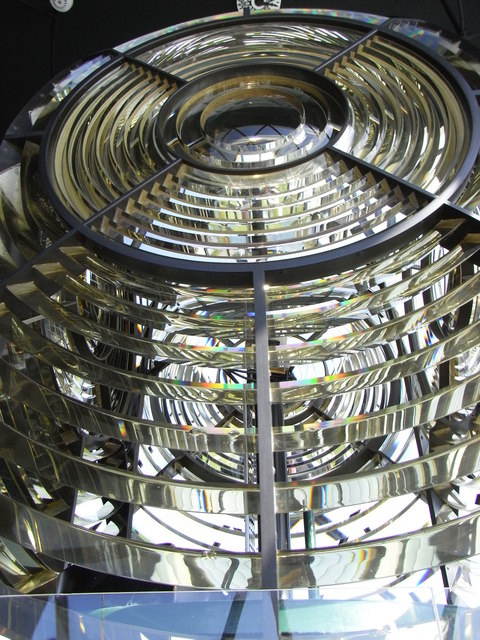 |
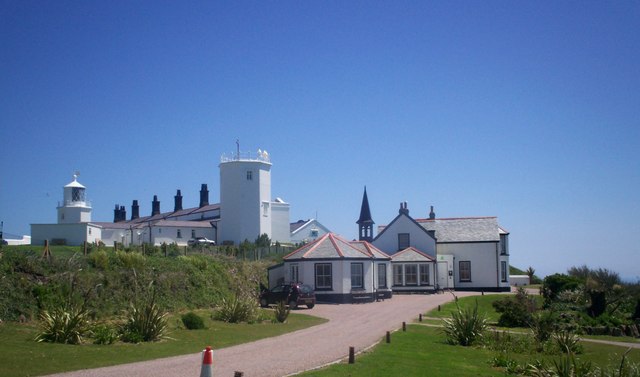
 Photo by
Peter Clayton YHA
Photo by
Peter Clayton YHA

Lighthouse information Grid
|
Name: |
Lizard Lighthouse, Lizard Point,
Cornwall |
|
Current status: |
Lighthouse is in use. Open to visitors
- see below
Two towers - East active, West tower
inactive since 1903 and lantern removed. |
|
Geographic Position: |
49° 57'.58 N 05° 12'.07 W |
|
Grid Reference: |
SW704115 |
|
Ceremonial County: |
Cornwall
 |
|
Appearance: |
Twin octagonal
cylindrical stone towers connected by a 2 storey stone keeper's
houses, the east tower has a lantern, and gallery. The whole
building is painted white. |
|
Map Link: |
maps  Multimap
Multimap
 Streetmap
Streetmap get-a-map
get-a-map
 |
|
Aerial photo: |
Google
satellite view
 |
|
Other photos: |
Geograph
 |
|
Originally built: |
1619 |
|
Current lighthouse built: |
1751 |
|
Height of Tower: |
19 metres |
|
Height of light above mean high sea level: |
70 metres 210ft |
|
Character of light: |
One white flash every 3
seconds |
|
Character of fog signal: |
1 blast every 30 seconds |
|
Range of light: |
26 nautical miles |
|
Owned / run by: |
Trinity House
 |
|
Website: |
TH  TH Open
TH Open
 Heritage Centre
Heritage Centre
 |
|
Other Useful Websites: |
Wiki  LD
LD Lizard Lighthouse full screen panorama
Lizard Lighthouse full screen panorama
 |
| Routes: |
|
|
Notes: |
|
|
|
.
Lighthouse Visit Planning Grid
|
Name: |
Lizard Lighthouse, Lizard Point, Cornwall |
|
Grid Reference: |
SW704115 |
|
Location: |
|
|
Getting there: |
Located on the point at the end of the A3083 (Lighthouse Road)
from Helston. |
|
Access: |
|
|
Parking: |
National Trust car park
next to entrance gate. |
|
Address: |
|
|
Postcode: |
|
|
Telephone: |
01326 290202 |
|
Email: |
|
|
Opening times: |
See also Trinity
House
page
 forwhen this is open and
forwhen this is open and
Trinity house Lighthouse closure page

A PDF can be downloaded relevant to the
2010 year
 |
|
Charges: |
Charge to enter the
Heritage Centre and a second additional charge to undertake the lighthouse
tour. There are other composite options as well, with other exhibitions/places
- see
current rates
 |
|
Best Times to Visit: |
Check opening, access and tide times. |
|
Facilities: |
|
|
Things To Do,
See and Photograph: |
Lighthouse, coastal, wildlife, plants,
possibly ships. |
|
What to take: |
Shoes suitable for climbing many steps, small
bag with necessary items, Camera, selected lenses and filters. |
|
Nature highlights: |
Coastal birds |
|
Photo Restrictions: |
None Known |
|
Other Restrictions: |
None Known |
|
Nearby Locations: |
|
|
Other Relevant pages: |
For more articles, lists and other information
see the
Lighthouses Section

Lighthouse Map of England and Wales


Featured List of
Lighthouses - England and Wales
 
List of Minor Lighthouses and Lights - England and Wales
 |
|

|
Please let us know any other information that we
can add to the Further information and Planning Grids or page and any errors that you discover. Before making a long trip to any location it is always
wise to double check the current information, websites like magazines may be
correct at the time the information is written, but things change and it is of
course impossible to double check all entries on a regular basis. If you have
any good photographs that you feel would improve the illustration of this page
then please let us have copies. In referring to this page it is helpful if you
quote both the Page Ref and Topic or Section references from the Grid below. To print the
planning grid select it then right click and print the selected area.
Please submit information on locations you discover so
that this system continues to grow.
|